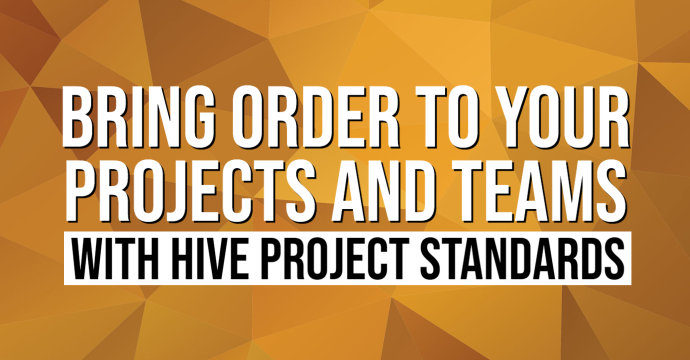
What should a firm do to solve their common Revit project management issues? Does starting a project take too much time because your company template has a large file size? How about working on a project that has errors or crashes because of unapproved Revit family content that has been inserted? Do you have so many system families (walls, floors, ceilings, etc.) that it takes forever to find the right one in the Properties browser? And lastly, if you don’t have a standard firm detail view in your template, how long does it take you to search through past projects to find and import it? You need HIVE CMS.

What is HIVE, and how can it reduce the size of my company template?
HIVE is an industry-leading, Autodesk-endorsed content management system developed specifically for the AEC industry. Firms can organize, manage, set permissions and ensure the latest content is kept up to date and available for all project participants, even when working remotely. Users can quickly find Revit, AutoCAD, PDF, images, and other file types quickly using libraries, tags, favorites and file metadata.
Your firm can extract and store not only loadable families for Revit but also system families, detail views, sheets, schedules and more FROM Revit (and your Revit templates). Therefore, by storing this content in HIVE and only needing the basics in your Revit template (annotations, dimensions, line types, view templates, etc.), your company template will be more manageable.

How can my firm use HIVE to control approved Revit content?
HIVE uses roles and permissions to control and manage content that your firm’s users upload and share. Your users can be assigned the role of CMS administrator, manager, contributor or consumer. Each role has its own list of assignments that they can perform. The goal is to only allow specific tasks to specific users, which allows you to maintain control over your firm content and organize that content with libraries.
Libraries can be considered a collection of groups and users. This may seem counter to the traditional definition. This is because the content within HIVE is not contained in any library; rather, content is associated with one or more libraries so that access to it can be granted by the library itself. Therefore, a library is a list of users and groups as well as references to content. Because a content item can be associated with more than one library, it is more easily tracked and managed, which eliminates the need for duplication of files and data.
There are three kinds of libraries:
- Organizational Libraries – these are the most common. They are libraries an organization creates for their own users. They are listed only if the logged in user has been granted access by an admin.
- Shared Libraries – these are libraries shared with another organization. The user that has been invited to a shared library can do much of the same things as can be done with an organizational library.
- Public (Subscription) Libraries – these are libraries available to all organizations within HIVE. These libraries are read-only.

How can my firm use HIVE to store Revit system family standards?
As stated previously, HIVE is unique in that it can extract and store not only loadable families for Revit but also system families, detail views, sheets, schedules and more FROM Revit (and your Revit templates). Using the built-in “Add Content” feature within HIVE, your CMS administrator, manager, or contributor, can add files, folders, CAD elements, and Revit project elements.
Adding Revit project elements requires that Revit or your project template be open with your project, but all other content can be added directly through the HIVE program. Assigning the new content to the appropriate library, or libraries, can all be done from the same “Add Content” location. Tags can also be assigned, “en masse” to that same uploaded content. When satisfied with the batch, click process to begin. At the end of the batch, a log will be presented showing what was done and the result (success, warning, error). Any content that is uploaded will be checked against content already in the system. If a file is found with the exact same name, it will automatically be considered an update of what is already in the system.

How can my firm use HIVE to store detail views and sheets?
Because HIVE can upload Revit project elements, your firm can now store a variety of Revit content that you typically cannot extract from Revit.
- System Families
- Ceilings
- Floors
- walls (basic, stacked, and reveals/sweeps)
- curtain walls (types, mullions, and panels)
- roofs (types, fascias, gutters, and soffits)
- stairs and ramps (types and railings)
- Schedules
- Sheets
- Views (Detail)
- Model Groups
Conclusion
When I worked in my previous architecture firm, I really wished we had HIVE. The amount of time you can save as a BIM or project manager when uploading, organizing, securing or updating Revit content is incalculable. And with the ability to organize your client content by users and groups, it is so much easier to manage your content.
Have more questions? Don’t hesitate to reach out!
You may also like:
Stay Connected
Get 24/7 access to top-notch technical content with new learning opportunities every week.


